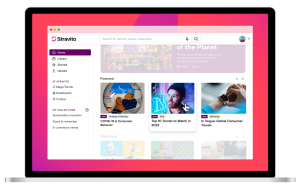Lack of Metadata Management Complicates QlikTech Integration Efforts
Last week, QlikTech revealed better-than-expected financial results for the first quarter ending March 31, 2011, and the financial press was quick to notice. While we agree that QlikTech is likely to enjoy continued growth in the quarters ahead, Wikibon also cautions IT organizations about the potential difficulty they face bringing QlikTech deployments under their control.![]()
QlikTech’s core platform, called QlikView, is a lightweight, in-memory business intelligence (BI) application with an intuitive user interface. It is popular with non-expert business users, both because of its ability to be deployed quickly with minimal IT involvement and its ease-of-use. QlikView allows business users to quickly dive into corporate data analysis and reporting without application deployments getting trapped in the all-too-common IT bottleneck. End-users generally do not the require extensive training sometimes required with BI applications with more complex functionality, such as SAP BusinessObjects and SAS Institute. For these reasons, Wikibon believes QlikView will indeed continue growing its customer base as end-user demand for intuitive, quick deploying BI tools shows no sign of letting up.
QlikView’s greatest strengths contribute to its greatest weaknesses, however. The platform can be deployed relatively quickly because it does not require extensive upfront data modeling. But QlikView’s lack of sophisticated metadata management capabilities makes reconciling data definitions between and among other enterprise applications arduous.
This weakness is most often encountered when QlikView customers attempt to integrate existing departmental QlikView deployments – a common deployment model as QlikView is generally limited to 20 GBs of data — with the larger enterprise IT infrastructure.
Departmental deployments often involve fewer data domains than enterprise-level deployments, with few variables and relatively low data volumes. In a typical scenario, a marketing director might turn to QlikView to analyze marketing-centric data – that is data that largely resides inside a marketing database with similar attributes like customer name, address, purchase history, etc.
Problems occur when that marketing department wants to start pulling non-marketing data into QlikView, and, conversely, when IT wants to integrate the departmental QlikView deployment with the rest of the enterprise. Both jobs are difficult to accomplish because QlikView lacks robust metadata management capabilities.
The marketing department’s definition of a customer may be different than the accounting department’s definition, for example, so reconciling the two with an underlying semantic layer is needed. QlikView’s dearth of metadata management capabilities makes this job a difficult one. Data modelers and subject matter experts don’t have to spend a lot of upfront time prepping the data for a QlikView deployment, but that time and effort can be lost on the back end. It’s not that metadata management can’t be done with QlikView, but customers that want to integrate QlikView deployments with other enterprise applications will have to spend more time and money doing so than they would with competing BI platforms.
Action Item: Enterprises considering departmental QlikView deployments must weigh the benefits of quick access to intuitive BI capabilities for non-expert end users with the potential difficulty of integrating the platform with the rest of the enterprise infrastructure at a future date. While QlikTech has made some progress in recent iterations of its platform, the vendor needs to significantly improve its metadata management capabilities to truly be considered an enterprise-class BI platform.
[Cross-posted at Wikibon Blog]
A message from John Furrier, co-founder of SiliconANGLE:
Your vote of support is important to us and it helps us keep the content FREE.
One click below supports our mission to provide free, deep, and relevant content.
Join our community on YouTube
Join the community that includes more than 15,000 #CubeAlumni experts, including Amazon.com CEO Andy Jassy, Dell Technologies founder and CEO Michael Dell, Intel CEO Pat Gelsinger, and many more luminaries and experts.
THANK YOU













